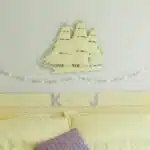A window seat is a charming addition to any home decor. It can provide a cozy nook for reading, relaxing, or enjoying the view outside. Building one yourself is not only fulfilling but also cost-efficient. With the right tools and materials, you can create a unique window seat that fits your personal style and space.
However, building a window seat requires careful planning and execution. It involves measuring the space accurately, selecting suitable materials, and mastering basic carpentry skills such as cutting wood and assembling pieces. In this article, we will guide you through the steps of building a window seat from scratch. Whether you are an experienced DIY enthusiast or a beginner carpenter looking for a new project, our instructions will help you create a functional and beautiful window seat that enhances your living space.
Assessing Your Space
To build a window seat, it is important to assess the space where it will be installed. Maximizing comfort and optimizing space are key factors to consider during this process. It is important to measure the area accurately to determine how much space you have available. This will help you decide on the size of the seat and how many people it can comfortably accommodate.
When assessing your space, take into account any existing features that may impact the size or placement of your window seat. These could include windowsills, radiators or electrical outlets. You may need to make adjustments to your design plans in order to work around these obstacles.
It is also important to consider the purpose of your window seat. Will it be primarily for relaxing and reading? Or will it serve as additional seating for guests? The answer to this question will help determine the overall style and functionality of your window seat. With careful planning and consideration, you can create a functional and stylish addition to your home that maximizes both comfort and space.
With your space assessed, the next step is choosing the right materials for your window seat.
Choosing The Right Materials
When building a window seat, selecting the right materials for the job is essential. Popular materials for the job include various types of wood, such as plywood and lumber, along with upholstery foam and fabric. Common tools used to construct a window seat include saws, hammers, screws, nails, glue, bolts, sandpaper, and stain. Finally, hinges should be used to properly assemble the window seat and ensure it opens and closes smoothly.
Types Of Wood
When it comes to building a window seat, selecting the right type of wood is crucial. Wood selection can significantly impact the final outcome of your project and affect its durability and cost. As a professional carpenter, I recommend considering several factors before making this decision.
Firstly, you need to consider the environment in which your window seat will be located. If it’s going to be exposed to direct sunlight or moisture, you should opt for a sturdy wood species like teak or cedar that can withstand these conditions. On the other hand, if your window seat is placed indoors and not exposed to harsh elements, select a softer wood like pine or poplar that would be more affordable.
Secondly, think about how much maintenance you’re willing to put into your window seat. Some types of wood require regular maintenance like sealing or staining while others are naturally resistant to rotting and insect damage. For low-maintenance options, consider using hardwoods such as oak or walnut that are durable and easy to maintain.
Lastly, budget plays a significant role in choosing the right type of wood for your project. Some woods like mahogany or cherry are beautiful but come with hefty price tags while others such as fir or spruce are more affordable yet still provide excellent results. By balancing durability and cost-effectiveness with your desired aesthetic appeal, you can select the best wood for your window seat project.
In conclusion, selecting the right type of wood for building a window seat involves considering various factors such as environment, maintenance requirements, and budget constraints. With proper consideration and research beforehand, you can achieve an attractive yet durable end-product that will serve you well for years to come.
Plywood
When it comes to building a window seat or any home improvement project, choosing the right materials is crucial. One of the most popular choices is plywood, a versatile and durable material that can be used in various applications. However, there are also plywood alternatives that you can consider, depending on your needs and preferences.
Plywood is made from thin layers of wood veneer glued together, creating a strong and stable panel. It comes in different grades and thicknesses, making it suitable for different purposes such as flooring, cabinetry, and furniture. Plywood finishes can also vary from smooth to textured surfaces, allowing for customization options. However, if you’re looking for alternatives to plywood, other options include medium-density fiberboard (MDF) or oriented strand board (OSB), which have their advantages and disadvantages.
MDF is made from wood fibers compressed with resin and offers a smooth surface that’s easy to paint or laminate. It’s also more uniform in density compared to plywood but less durable when exposed to moisture. OSB is similar to plywood but has larger strands of wood chips instead of veneers. It’s cheaper than plywood but not as strong or stable due to its directional nature. Ultimately, choosing between these materials depends on your specific needs and budget constraints.
Preparing The Work Area
Now that you’ve chosen the right materials for your window seat, it’s time to prepare the work area. Before starting any construction, make sure to clear out any clutter in the room. This will give you ample space to move around and help prevent accidents. Additionally, it’s important to set up safety precautions such as wearing protective gear like gloves, goggles, and a dust mask.
Once the room is cleared and safety precautions are in place, it’s time to start measuring and cutting the wood for your window seat. Measuring accurately is crucial in ensuring that all pieces fit together properly. Use a tape measure to take precise measurements of each piece needed for the project. Next, use a saw or other cutting tool to cut each piece of wood according to your measurements.
Remember to take your time during this process and double-check all measurements before making any cuts. The success of your project hinges on how well you measure and cut each piece of wood. With careful attention to detail and patience, you’ll be well on your way to constructing a beautiful window seat that will add both functionality and style to any room in your home.
Measuring And Cutting The Wood
Before beginning the process of building a window seat, it is important to measure and cut the wood accurately. One common mistake that people make is not taking into consideration the thickness of the material they are working with. This can lead to incorrect measurements and ultimately result in a poorly fitting window seat. As a carpenter, I always recommend measuring twice, cutting once, to ensure precise cuts.
Measuring tips are crucial when building a window seat. Start by identifying the area where you plan to install the seat and take accurate measurements of its length, width, and height. Next, consider any obstacles such as baseboards or radiators that may affect your design. Finally, decide on the thickness of your wood and adjust your measurements accordingly. Remember that accuracy is key when measuring for a window seat.
Cutting techniques will depend on the type of saw you are using and the thickness of your wood. A circular saw is great for straight cuts while a jigsaw can be used for curved lines or more intricate designs. Always wear protective gear such as safety glasses and earplugs when operating power tools. Additionally, use clamps to secure your wood before cutting to prevent slipping or movement which can cause inaccurate cuts.
With accurate measurements and precise cuts, you can now move onto assembling the frame without any issues. Keep in mind that proper measuring and cutting techniques are essential for ensuring that all pieces fit together seamlessly during this step. In the next section, we will discuss how to assemble the frame to create a sturdy foundation for your window seat installation process.
Assembling The Frame
Before assembling the window seat frame, it is important to choose the right tools for the job. A circular saw, measuring tape, drill with driver bits, and a level are all essential tools to have on hand. Additionally, clamps can be helpful in holding pieces together while assembling.
Once you have gathered your tools, it’s time to reinforce the frame. Cut 2x4s to size and use them as braces between the legs of the frame. Secure these braces with screws and make sure they are level. Reinforcing the frame in this way will ensure that it can support weight and won’t wobble or collapse.
With the frame reinforced and sturdy, you are now ready to move onto installing the support brackets. These brackets will hold up the seat itself and should be placed at even intervals along the length of the frame. Make sure they are level before securing them into place with screws or bolts. With these brackets installed, your window seat is taking shape!
Installing The Support Brackets
Accurately measuring is the key to success when installing the support brackets for a window seat. Before installing the brackets, all measurements should be checked twice to ensure accuracy. After the brackets have been cut to size, they should be securely attached to the walls and floor of the room. To ensure the brackets are installed correctly, appropriate screws should be used and the brackets should be secured firmly in place. To complete installation of the brackets, it is necessary to use a level to make sure they are mounted correctly. Once the support brackets are installed, it is important that they are regularly checked to ensure the window seat remains secure.
Measuring For Brackets
To ensure a sturdy and reliable window seat, accurate measurements for bracket placement are crucial. Proper bracket placement will determine the weight capacity of the seat, preventing any potential accidents or injuries. Start by measuring the length of the window seat and marking it on the wall where the brackets will be installed.
Next, measure and mark the distance from each end of the window seat to where you want your first and last brackets to be placed. It is important to evenly distribute the weight of the seat by placing additional brackets in between these two marks. The number of brackets needed will depend on the length of your seating area, but a general rule is to place a bracket every 24 inches.
After determining where each bracket should be placed, make sure they are level before drilling them into place. Using a leveler will guarantee that each bracket is secured at an even height. Double-checking your measurements and ensuring proper placement before installing support brackets will provide a solid foundation for your window seat, which can withstand heavy weight loads without any issues arising.
In conclusion, taking precise measurements for bracket placement is essential in building a durable window seat that can support considerable weight capacity. Even distribution of brackets along with accurate measurement will ensure that there is no compromise on stability or safety when using your new window seat as a comfortable place to relax or read after a long day’s work.
Installing The Brackets
After accurately measuring and marking the placement of brackets for your window seat, the next step is to install them securely. Choosing hardware that is strong enough to support the weight of the seat is crucial. It is recommended to use heavy-duty L-brackets or shelf brackets that are designed for heavy loads. Make sure to select hardware that fits the dimensions of the brackets and can be easily installed onto the wall.
To secure the brackets onto the wall, it is important to use appropriate screws and anchors. Depending on the type of wall material, different screws and anchors may be needed. For example, if you are installing onto drywall, you will need a screw anchor that expands behind the wall when screwed in place. Once anchored into place, attach each bracket using screws that are long enough to reach through both the bracket and into the wall.
After attaching all brackets, double-check their levelness before placing the window seat on top of them. If any adjustments need to be made, now is the time to do so before adding weight on top of them. Installing support brackets may seem like a simple task, but it is an essential part of ensuring your window seat’s safety and stability. Taking care in choosing hardware and properly securing each bracket will provide a solid foundation for your new seating area, giving you peace of mind every time you sit down.
Securing The Brackets
Proper installation of support brackets is essential when building a window seat. Before installing the support brackets, it is important to choose the appropriate types of brackets that can carry the weight of the seat. Heavy-duty L-brackets or shelf brackets are recommended for their strength and durability. The size of the brackets should also be considered to ensure they fit the dimensions of your window seat.
Once you have selected the correct type and size of bracket, it is time to secure them onto the wall properly. The first step in this process is to locate the proper placement for each bracket by marking them accurately on the wall. Next, you must use screws and anchors that are appropriate for your specific wall material. For example, if you are mounting onto drywall, screw anchors that expand behind the wall when screwed in place are necessary.
After securing all brackets onto their designated spots, it is crucial to check their levelness before placing your window seat on top. This will ensure that any adjustments needed can be made before adding any weight to them. Remember that installing support brackets may seem like an easy task but doing so correctly will provide a firm foundation for your new seating area. Taking care in choosing hardware and properly securing each bracket will give you peace of mind each time you sit down to enjoy your new window seat.
Adding The Seat Base And Back Support
Building a window seat is an exciting project that requires careful planning and execution. As you move forward with your project, it’s important to add the seat base and back support before you can proceed with other tasks. The following section will guide you on how to add these important elements to your window seat.
To begin, cut two pieces of plywood to the same size as your window frame. These will form the base of your seat. Next, attach them together using wood glue and screws. Make sure the edges are flush so that your cushion will fit correctly. Once the base is secure, create the back support by attaching a piece of wood perpendicular to the base at the desired height.
Adding cushions is an integral part of designing a comfortable window seat. To choose the right fabrics for your cushions, consider factors such as durability, texture, and color scheme. For example, if you plan on using your window seat often or have young children who may spill food or drinks on it, opt for durable fabrics like leather or vinyl. Alternatively, if you want a cozy feel, consider using soft wool or plush velvet.
As you move forward with adding cushions and choosing fabrics for your window seat, keep in mind that sanding and finishing the wood is also an essential step in completing this project successfully. In the next section, we’ll show you how to achieve a smooth finish that will enhance both the look and functionality of your new window seat.
Sanding And Finishing The Wood
After adding the seat base and back support, it’s time to move onto the next step of building a window seat: sanding and finishing the wood. Sanding is an essential part of woodworking as it smooths out rough edges and splinters, making the piece safe to use. It also prepares the wood for staining or painting. Before sanding, make sure to remove any debris or dust from the surface.
Once you’ve sanded down the wood to a smooth finish, it’s time to apply a stain or finish. Staining techniques can vary depending on personal preference and desired outcome. Some may prefer a natural look, while others may want a darker finish. When selecting a stain, consider the type of wood you’re working with as well as the overall aesthetic of your space. Apply the stain evenly with a brush or cloth and wipe away any excess.
After applying your desired finish, it’s important to maintain the quality of your wood over time. Wood maintenance includes regular cleaning with mild soap and water, avoiding direct sunlight exposure that can cause fading or cracking, and using furniture polish to keep it looking new. Taking care of your window seat will ensure its longevity and keep it looking beautiful for years to come. In our next section, we’ll cover how to upholster the seat cushion for added comfort and style.
Upholstering The Seat Cushion
- When upholstering a window seat cushion, it is important to choose the right fabric for the project. The fabric should be durable and able to withstand wear and tear.
- When choosing a fabric, it is a good idea to consider the colors and patterns of the room in which the seat will be located.
- Once the fabric is chosen, the cushion can be sewn in the desired shape. Care should be taken to ensure the seams are even and the fabric is properly secured.
- Making an upholstered window seat cushion is a great way to add style and comfort to any space and can be a rewarding DIY project.
Choosing The Fabric
When it comes to upholstering a window seat cushion, choosing the right fabric is crucial. There are a variety of fabric types available, each with its own set of pros and cons. Consider the usage of the window seat when selecting a fabric type. If it will be frequently used for seating, opt for a durable fabric such as leather or microfiber. For occasional use, look into fabrics like cotton or linen.
Color options for the fabric are also important to consider. The color should complement the overall aesthetic of the room while also providing a pop of interest to the window seat area. Neutral colors like beige, gray, or cream are versatile and will match almost any decor style. On the other hand, bold colors like navy blue or bright red can add an eye-catching element to an otherwise neutral room.
Ultimately, choosing the perfect fabric for your window seat cushion requires careful consideration of both function and style. Take time to explore different fabric types and color options before making a final decision. With a little research and attention to detail, you can create a cozy and stylish nook that will be enjoyed by all who use it.
Sewing The Cushion
When it comes to upholstering a window seat cushion, choosing the right fabric is not the only consideration. The thickness of the cushion and how it will be sewn together are also essential aspects to take into account. Choosing a thicker cushion will provide more comfort and longevity, especially if the window seat will be frequently used. Additionally, selecting an appropriate stitch type and pattern can help ensure that the cushion stays securely in place and maintains its shape over time.
When sewing the cushion, it is important to measure accurately to ensure that it fits snugly on the window seat frame. A professional carpenter or home improvement writer would advise using a durable thread for sewing and double-stitching important seams for added strength. For those who want to add decorative touches, consider incorporating piping or trim around the edges of the cushion for a polished look.
In conclusion, while choosing fabric is crucial when upholstering a window seat cushion, other factors such as cushion thickness and sewing techniques should not be overlooked. By taking these additional considerations into account, homeowners can create a comfortable and long-lasting nook that provides both practicality and style.
Installing The Trim
Installing the Trim Trim design plays a significant role in giving your window seat an elegant look. When selecting trim, ensure that it matches the décor of the room to create a seamless blend. The most commonly used trims for window seats are baseboards, crown molding, and aprons. Choose a style that complements the overall design of your house.
Before installing trim, ensure that you have all necessary tools and materials. These include a measuring tape, saw, nails, hammer or nail gun, adhesive glue, and sandpaper. Measure the dimensions of each side of your window seat accurately before cutting wood to fit perfectly around it. Use adhesive glue to attach them carefully to avoid leaving gaps.
Painting techniques come in handy when finishing off your window seat installation project. Painting trim enhances its appearance while also protecting it from wear and tear. Before painting or staining the trim, make sure that you sand it correctly to eliminate any rough edges or bumps on the wood surface. Afterward, apply primer before painting or staining with a brush or spray gun for better results.
Transition: Now that we have installed the trim successfully let’s move on to applying paint or stain onto our window seat.
Painting Or Staining The Window Seat
Once the window seat has been constructed and sanded, the next step is to paint or stain it. Choosing colors can be a daunting task, but it is important to consider the overall design of the room. It is recommended to select a color that complements the existing color scheme of the space. If you are unsure about what color to choose, you can find inspiration from interior design magazines or websites.
When selecting a paint or stain for your window seat, make sure to choose one that is appropriate for the type of wood used in construction. Paints and stains have different properties, so it’s important to read labels carefully before purchasing. You should also decide whether you want a glossy or matte finish. A glossy finish tends to reflect more light and can be easier to clean, while a matte finish creates a softer look.
Another thing to consider when painting or staining your window seat is how it will affect the mood of the room. Certain colors can create feelings of warmth or coolness, so it’s important to choose wisely based on your desired atmosphere. With these considerations in mind, you can confidently paint or stain your window seat knowing that it will enhance both its appearance and its place within your home.
Four Tips for Painting or Staining Your Window Seat:
- Choose a color that complements your existing room décor.
- Read labels carefully when selecting paints and stains.
- Decide between glossy or matte finishes based on lighting and cleaning needs.
- Consider how different colors may affect the mood of the room.
Now that you have painted or stained your window seat, it’s time to think about adding storage options for books, blankets, and other items that will make this cozy nook even more functional and inviting.
Adding Storage Options
One way to maximize comfort and customize the design of your new window seat is to add storage options. Storage can be incorporated in a number of ways, depending on the size and style of your window seat. One option is to build shelves or cubbies into the base of the seat, providing a convenient spot for books, blankets, or other items. Another option is to add drawers or cabinets underneath the seat itself, which can be especially useful if you need additional closed storage space.
When designing your storage options, consider both form and function. You want to create a space that looks beautiful and fits seamlessly with the rest of your home décor while also serving its intended purpose. Depending on your skill level and budget, you may choose to use pre-made storage components or design custom options that fit exactly in your space.
Ultimately, adding storage to your window seat not only increases functionality but also creates a cozy spot for reading, relaxing, or spending time with loved ones. By maximizing comfort and customizing design through thoughtful storage solutions, you’ll create a truly inviting space that will become a favorite spot in your home.
To enhance the ambiance of your new window seat even further, consider incorporating lighting into your design. Proper lighting can make all the difference in creating a warm and inviting atmosphere that encourages relaxation and rejuvenation. From simple overhead fixtures to more elaborate sconces or lamps placed strategically throughout the space, there are many lighting options available that can enhance both form and function in this important area of your home.
Incorporating Lighting
According to a study conducted by the National Sleep Foundation, individuals who are exposed to natural light during the day tend to sleep better at night. This is why incorporating lighting into your window seat design can be a great way to enhance the overall functionality of the space. When it comes to lighting placement, it’s important to consider factors such as the size and shape of your window seat, as well as any existing electrical wiring in the room.
Fortunately, there are many different light fixture options available that can help you achieve your desired look and feel. For example, recessed lighting can provide a sleek and modern look that doesn’t take up too much space. Alternatively, pendant lights or wall sconces can add a touch of elegance and sophistication to your window seat area. Ultimately, the choice will depend on your personal style preferences and the specific needs of your space.
When it comes time to decorate the space around your window seat, it’s important to keep in mind how you plan on using the area. If you’re looking for a cozy reading nook, consider incorporating soft textiles like plush pillows or warm blankets. On the other hand, if you plan on using your window seat as an entertainment hub, think about adding additional seating options or even a small table for snacks and drinks. With thoughtful planning and attention to detail, you can create a truly inviting and functional space that enhances both your home’s aesthetic appeal and its overall value.
Decorating The Space Around The Window Seat
- Choosing a color scheme for the space around the window seat should be based on the existing color palette of the room in order to create a cohesive look.
- Decorative pillows and blankets can be used to bring in a pop of color or pattern and tie the existing color palette together.
- Wall art and accessories should be selected based on the function of the space, as well as complementing the existing color scheme and decor.
- When selecting wall art, consider the size of the wall and the window seat and pick pieces that will not overpower the space.
- Keep accessories to a minimum to ensure the space does not appear cluttered or overwhelming.
- Lighting can add a welcoming atmosphere and should be considered when decorating the space around the window seat.
Choosing A Color Scheme
Color combinations are an essential aspect of decorating any space, including the area around a window seat. The right color scheme can entirely transform the look and feel of a room, creating a mood and atmosphere that is both inviting and comfortable. When selecting colors for your window seat area, consider the overall theme of your room, the natural light available, and your personal taste.
Design inspiration can come from many sources when choosing a color scheme for your window seat. Look to nature for inspiration with earthy tones or add pops of bold color with accent pieces like pillows or curtains. Take note of any existing colors in the room and choose complementary shades to create harmony in the space. Additionally, consider incorporating different textures and patterns into your design to add depth and interest.
In conclusion, choosing a color scheme for your window seat area requires thoughtful consideration. By selecting colors that complement each other while also reflecting your personal style, you can create an inviting space that adds beauty and functionality to any room in your home. So take some time to experiment with different combinations until you find the perfect one for you!
Adding Decorative Pillows And Blankets
When it comes to decorating the space around a window seat, adding decorative pillows and blankets can provide both comfort and style. Mixing patterns and textures can add interest and dimension to the space while also allowing for personalization. When choosing colors for your pillows and blankets, consider complementing or contrasting with existing colors in the room to create a cohesive look.
To mix patterns effectively, choose patterns that have similar color schemes or themes. For example, if you have a floral patterned curtain near your window seat, consider adding striped or geometric patterned pillows that incorporate similar colors as the curtains. Additionally, mixing different textures such as velvet or fur can add depth to your design while also providing extra comfort.
When choosing colors for your decorative pillows and blankets, again consider complementing or contrasting with existing colors in the room. If the room has mostly neutral tones, adding pops of bold color through accent pillows can make a statement without overwhelming the space. On the other hand, if there are already several bright colors in the room, opting for more muted tones in your pillow choices may be a better fit. Ultimately, by carefully selecting patterns and colors that work together cohesively, you can create an inviting and comfortable space around your window seat area.
Selecting Wall Art And Accessories
When it comes to decorating the space around a window seat, selecting wall art and accessories can provide the finishing touches that tie everything together. Choosing artwork that complements the color scheme of the room can add interest and visual appeal. For example, if your room features blue or green accents, consider adding artwork with cool tones or nature-inspired themes. When accessorizing the space around your window seat, consider incorporating fabric options that complement existing textures in the room.
When choosing wall art for your window seat area, consider the scale and size of the piece. If you have a larger wall space above your window seat, a statement piece such as a large canvas painting or gallery wall may be appropriate. Alternatively, if your space is smaller, a smaller piece of art or a series of smaller pieces may be more fitting. Additionally, incorporating accessories such as mirrors or decorative shelves can add interest and functionality to the space.
When accessorizing your window seat area with fabrics such as throw pillows or blankets, consider coordinating with existing patterns and colors in the room. Mixing patterns can add dimension to the space while also allowing for personalization. Similarly, choosing colors that complement or contrast with existing colors in the room can create cohesion and visual interest. By thoughtfully selecting wall art and accessories that work together cohesively, you can enhance the overall look and feel of your window seat area.
Enjoying Your New Window Seat
After successfully decorating the space around your new window seat, it’s time to take a step back and admire the ambiance you’ve created. However, before you can sit back and relax on your new cozy spot, let’s talk about how to make it even more comfortable and inviting with some cozy accessories.
Pillows: Adding throw pillows will not only increase comfort but also add visual appeal to your window seat. You can choose from a variety of patterns, textures, and colors that complement the surrounding decor.
Blankets: Layering soft blankets over the seat cushions will give you a warm and snuggly spot to curl up with a book or watch the world outside.
Lighting: Incorporating soft lighting such as string lights or table lamps near the window seat will create a relaxing atmosphere for reading or unwinding after a long day.
Plants: Adding plants can be an excellent way to bring natural beauty into your space while improving air quality. Choose plants that thrive in low light conditions such as snake plants or pothos.
Creating ambiance is all about making your space feel warm and inviting. By incorporating cozy accessories like pillows, blankets, lighting, and plants, you are sure to achieve this goal for your window seat. Don’t be afraid to experiment with different combinations until you find what works best for you.
In addition to adding physical comfort with accessories, consider incorporating scents like lavender or vanilla through candles or essential oils diffused nearby. These aromas can help create a peaceful atmosphere for relaxation or meditation. Enjoying your new window seat is all about making it personal and tailored to your needs – have fun with it!
Conclusion
When it comes to creating a cozy and functional space in your home, a window seat can be the perfect addition. By following these steps for building your own, you can take advantage of an underutilized area in your home and create a comfortable spot for reading, relaxing or simply enjoying the view.
Assessing the available space and selecting the right materials are key to ensuring success with this project. Prepare your work area and carefully measure and cut the wood to assemble the frame. Consider adding storage options and lighting to further enhance the functionality of your new window seat.
By taking time to decorate around this newly created space, you can add personal touches that make it truly unique to you. With a little planning and effort, you can create a beautiful new feature in your home that will be enjoyed for years to come. So go ahead, grab some tools, get started on that window seat project and enjoy basking in the warm glow of pride from knowing you built it yourself!
Image Credits
- “Teen Dream Window Seat” by champagne.chic (featured)




























